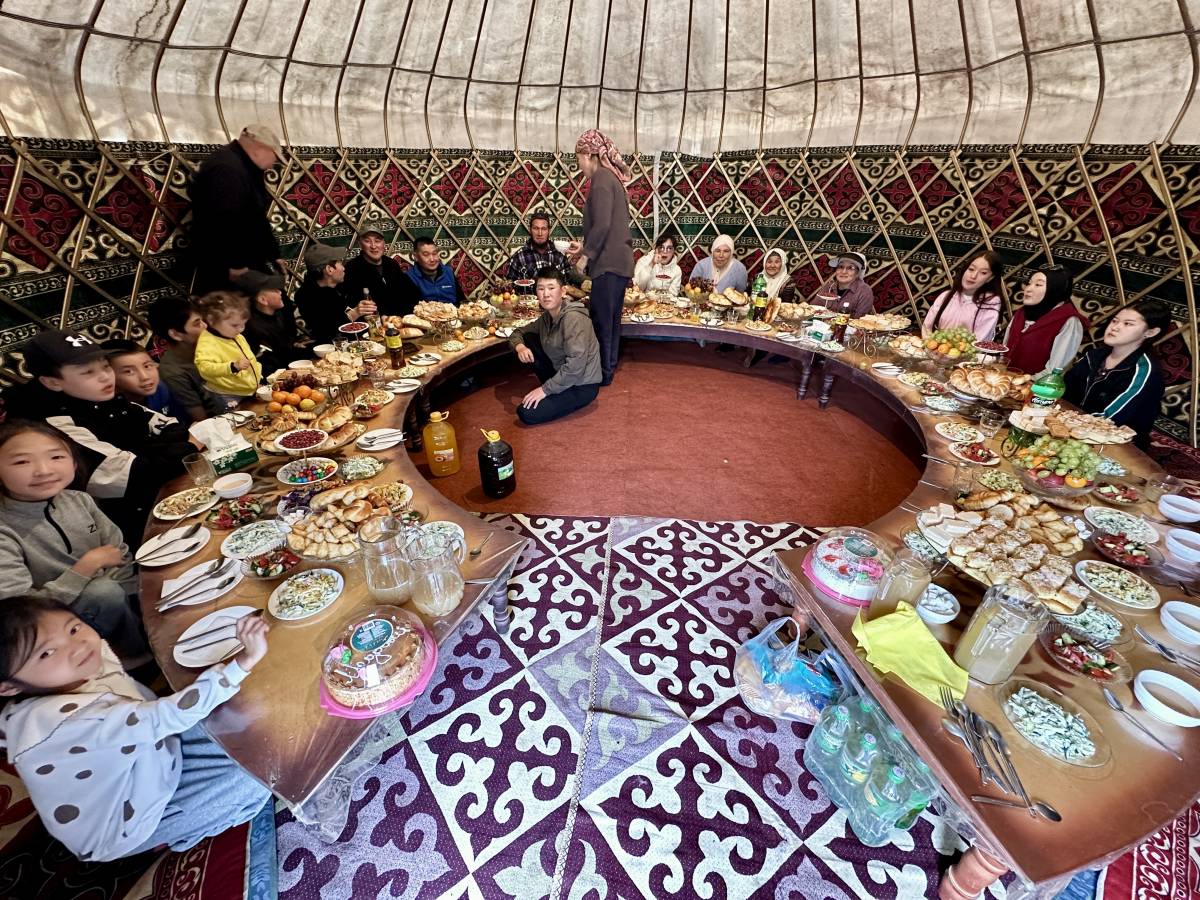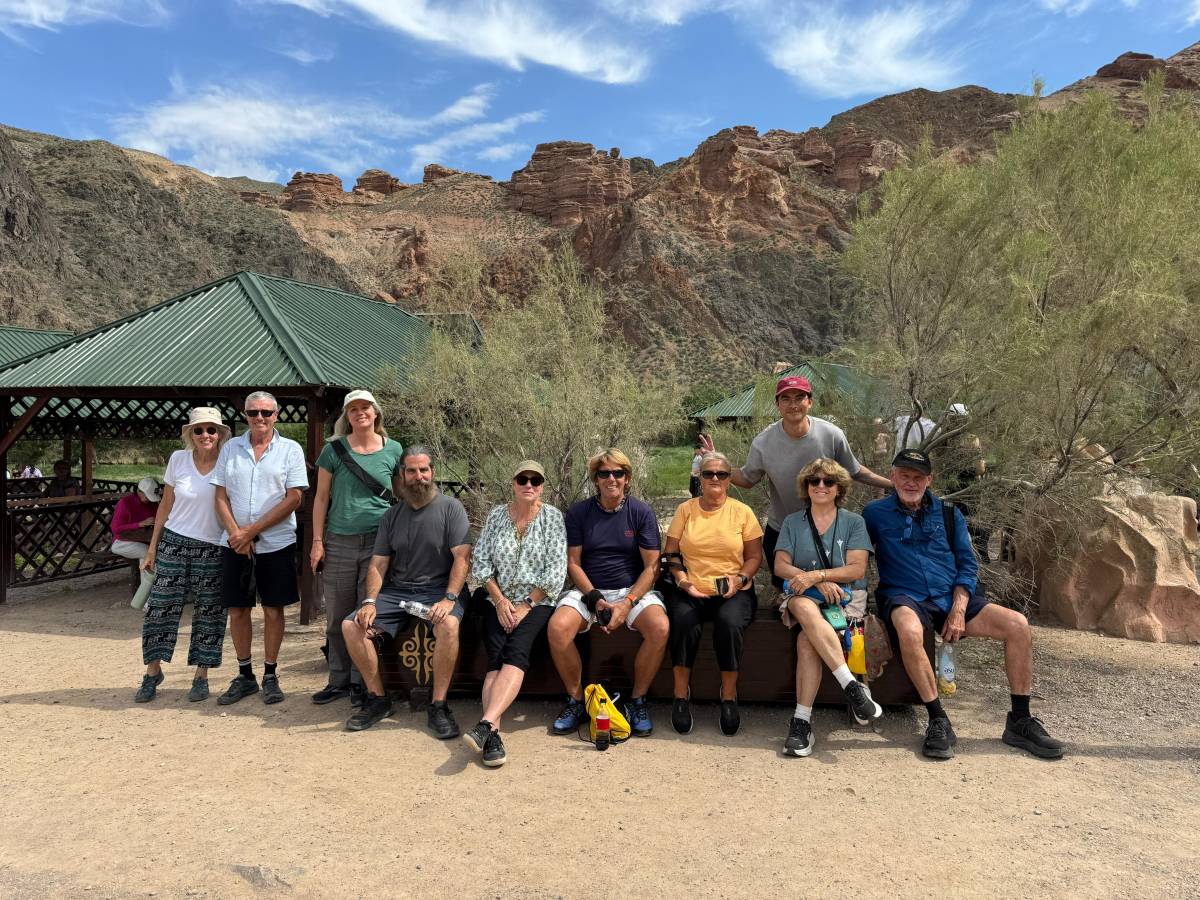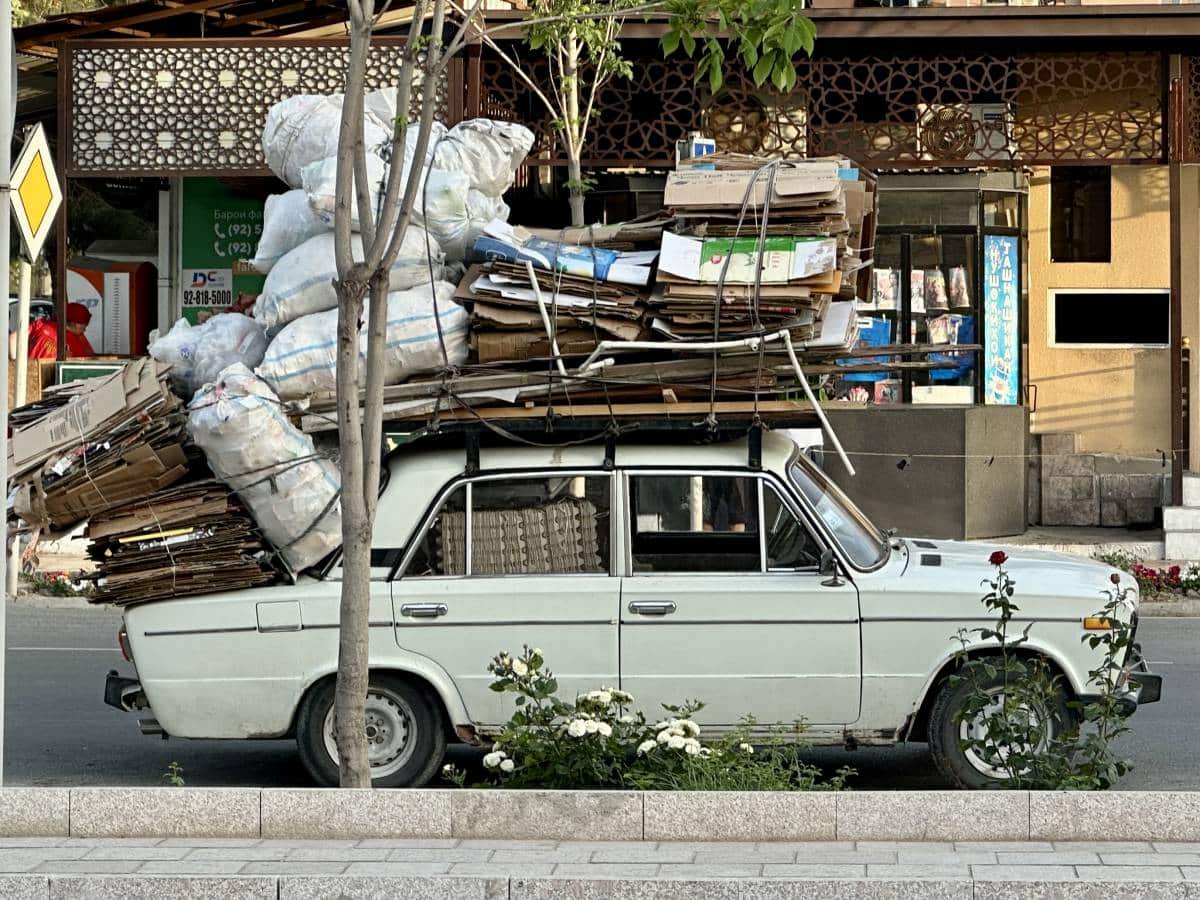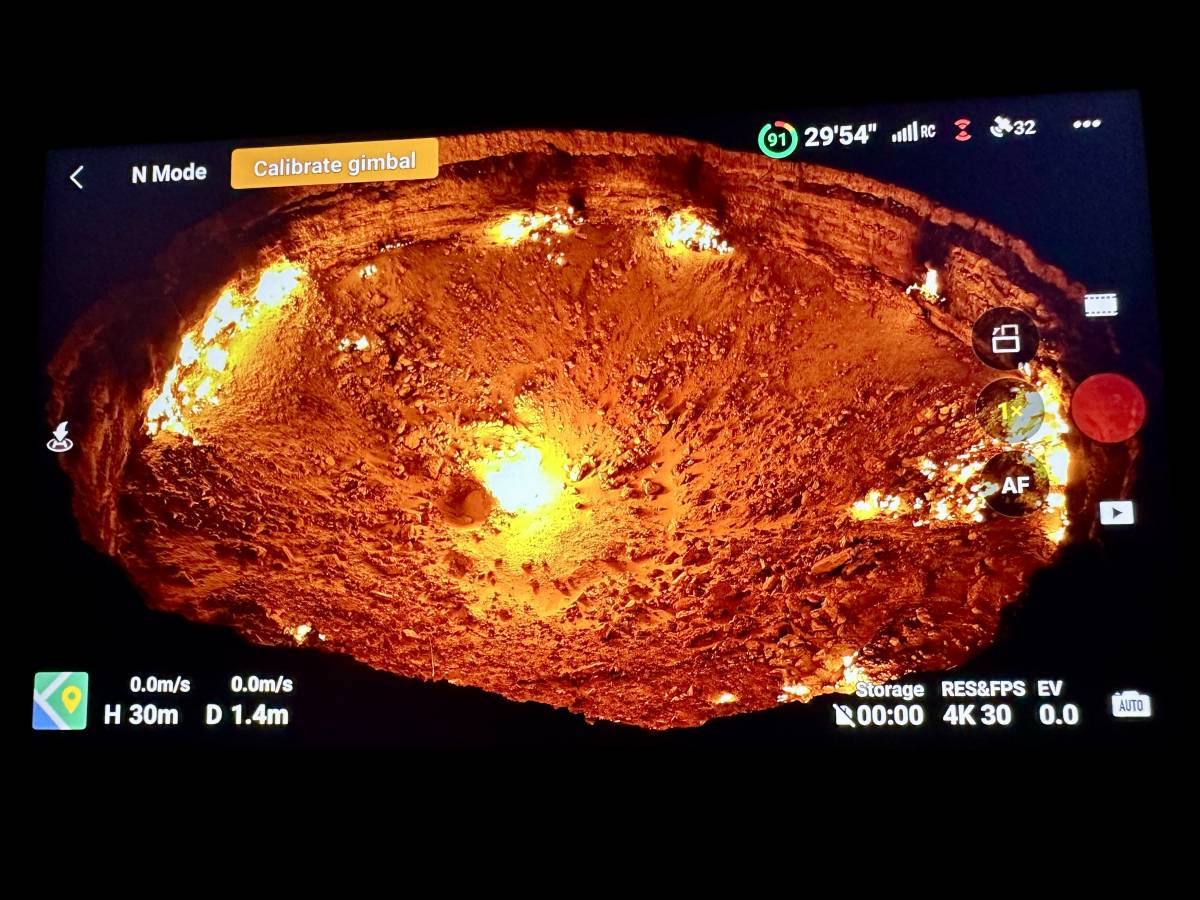
Turkmenistan
Despite the uniforms, the flight with Turkmenistan Airlines was highly acceptable. The trickiest bit was getting into the plastic cutlery. Others seemed to have no problem with access. I must have taken three minutes to figure it out, and I could just imagine my neighbours and the people in the aisles looking on somewhat perplexed at my struggle.
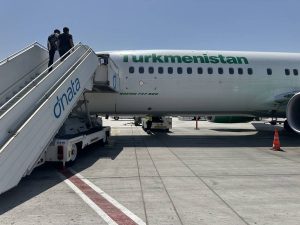
Once we landed it was a free for all. I’ve never witnessed such poor etiquette. Unbuckling, grabbing their bags, and pushing their way up the aisle. Then I had to do a Covid test which involved a woman waving a swab in the general vicinity of my nostril.
I was struck by how modern the airport was. I was expecting a tent. I was befriended by a chap offering me a taxi. He was actually a money changer. I’d bought some currency in the UK at the official rate of 4.5 Manat to the pound. This chap was offering ten! I changed fifty dollars with him. I later found out that the local rate can be as high as 19 to the dollar.

Ashgabat is the capital of Turkmenistan and it was quite the city. All the buildings were constructed using white marble, the roads were wide, the place was immaculately landscaped, and every roundabout had something going on – waterfall, monument, metal structure. It almost looked like a city of the future.
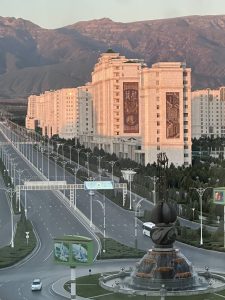
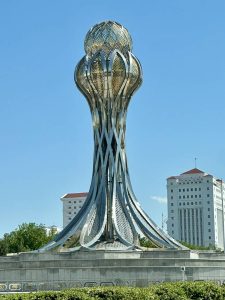
Ashgabat has a law specifying that all cars in the city must be either white, silver, or gold. 80% were white.
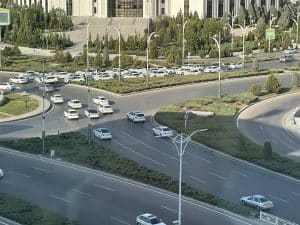
I met the group who seemed like a nice bunch. 10 of us- four Americans, three English, two Australians, and one Irish. Although one of the Brits and the Irish lady live in Australia.
The following morning we set off on a city tour with a 50 seater bus for 10 people. We were very close to the Iranian border, some 30 km away. There was a mountain range that provided the border between the two countries.
First up was Independence Park. Very neat.
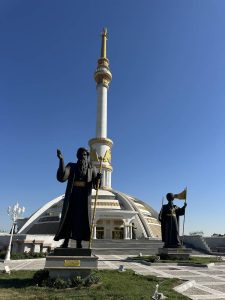
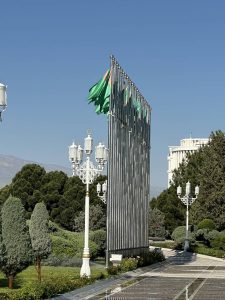
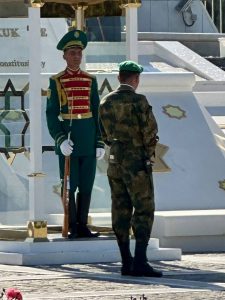
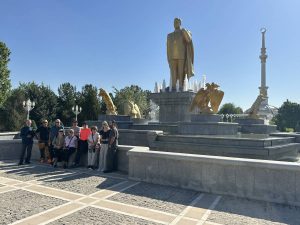
Turkmenistan is divided into five provinces, is the second largest of the five stans, but has the smallest population at only 6m. 80% of the country is covered by the Karukum Desert. They receive fewer than 15,000 tourists per year. Over 90% of the population are Muslim. Turkmenistan was annexed by the Russians in 1881 and gained Independence in 1991 when the Soviet Union dissolved. In 1995 they officially declared themselves “neutral” – a move supported by 185 UN countries, and they celebrate neutrality annually on December 12th. Independence is celebrated on September 27th. During COVID they reported zero cases and zero deaths. The WHO were apparently suspicious! The biggest industry is oil and gas and a litre of fuel costs 33p or 42 cents – 8th cheapest in the world.
Next was the UNESCO site of Nisa which was the capital of the Parthian Empire. Rumour has it that Alexander the Great once passed through.
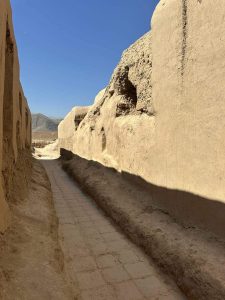
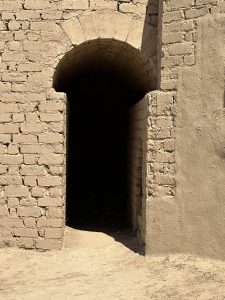
We then visited some ruins that became that way in 1948 when an earthquake hit, killing around 120,000 people.
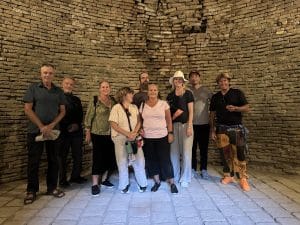
A few mosques followed before visiting a market where I purchased caviar.
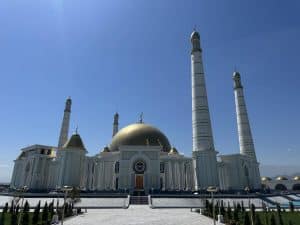
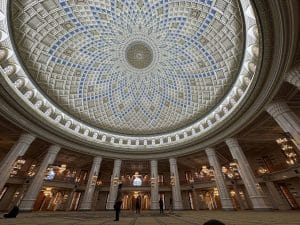
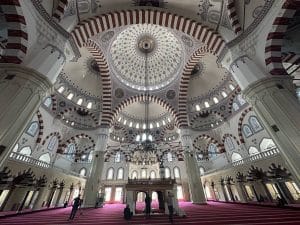
The last stop was the Palace of Happiness perched high on a hill next to a 5.5 star hotel.
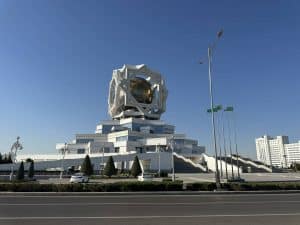
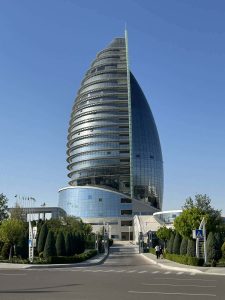
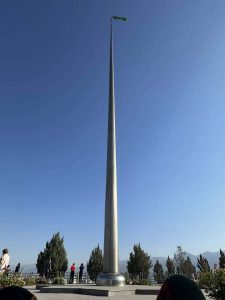
We dined as a group on a rooftop restaurant at the top of the mall where I had my first Turkmenistan beer…called Berk.
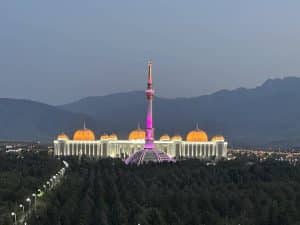
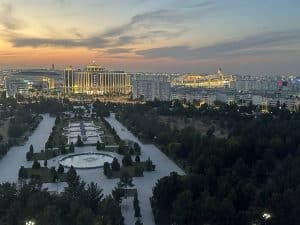
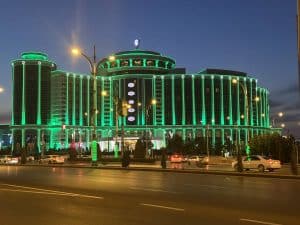
Wednesday morning I woke up early went to the gym in the dark. I couldn’t find the light switch. And then went for a walk outside as the sun was coming up. Tourists are not meant to walk around Turkmenistan without a guide so I didn’t stray too far from the hotel.
The group left in the enormous coach and headed for a horse farm. No ordinary horse farm. This was a very up market stables indeed. Horses are revered in Turkmenistan and cannot be eaten. Good to know! Some of these horses were trained for endurance races of 120 km. And one particular horse had won the beauty contest for most beautiful horse in Turkmenistan. The contest was the idea of the president.
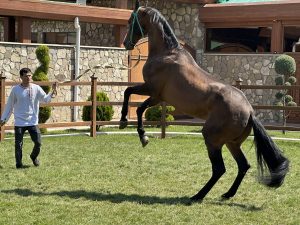
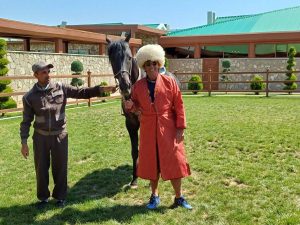
An hour later we swapped the comfort of our large coach for off-road 4×4 vehicles. We had been warned that the road was going to be rather bumpy. Four cars left in a convoy and boy was it bumpy. Six hours worth of bumps through the desert. I was in a car with young John and our driver was called Mohammed. A big guy of few words, but an expert at finding potholes. The roads were worse than Nepal and it felt like we were in a rally car as he drove at high speed.
We stopped at a couple of craters before the main event which was the Darvaza gas crater. We arrived before sunset and I have to say I was a little disappointed. I was hoping the whole crater, 78 m wide, was going to be on fire. Instead there were pockets of fire.
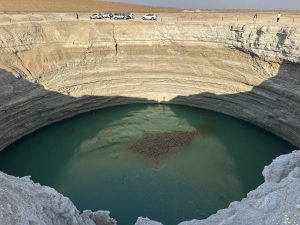
Darvaza has been burning continuously since 1971. We walked 10 minutes to our yurt camp which was our accommodation for the evening. We returned for sunset and the crater was far more impressive. And the darker it got, the better the spectacle.
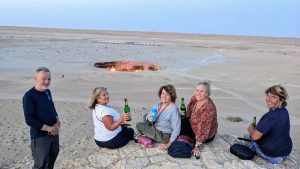
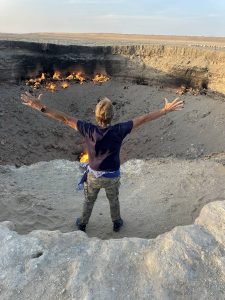
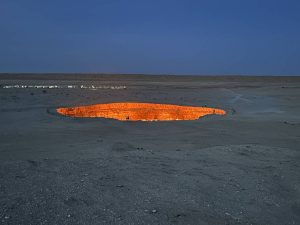
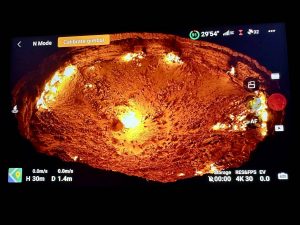
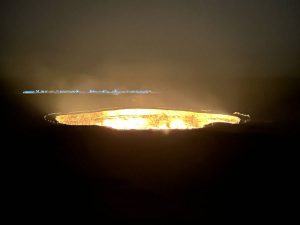
After dinner we retired to our yurts and I endured the most uncomfortable bedding I’ve ever experienced. The mattress was like a board and the pillow not much better. I ended up sleeping on the floor on top of a sleeping bag.
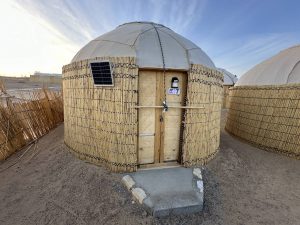
The following morning we were leaving at 5:30. I decided to get up earlier and go and see the crater once more. Finding my way there was relatively easy. Finding my way back was a different matter. Basically, I got lost and was wandering around the desert. Our camp was hidden behind a hill so there was no light to follow. Luckily, my Navajo instincts kicked in and I managed to find the camp three minutes before we were due to leave. A few years ago they lost a guy in the desert for two whole days.
We had another seven hours on shit roads heading towards a UNESCO Heritage site. I didn’t take in all the information but Genghis Khan was involved somewhere along the line.
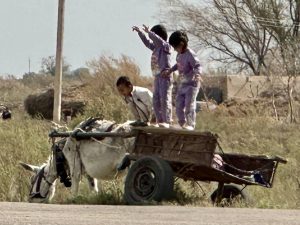
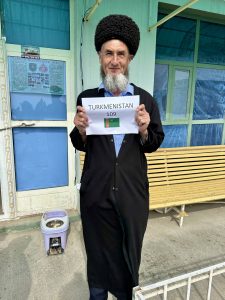
There was a hill nearby and in days gone by if a woman couldn’t get pregnant she would wrap herself up in a carpet and roll down the hill. It wasn’t a tradition that lasted very long. Probably on the basis that it had no effect on fertility.
At 4:30 we reached the border with Uzbekistan and said goodbye to our rally drivers. We also said goodbye to our 25-year-old guide, Serdar, who had been excellent.
I had enjoyed Turkmenistan. I hadn’t seen another man with light coloured hair in three days. Turkmen people certainly have a look.

